Worried about the algae in your backyard pond?
Algae is a natural part of a pond, and having less of it is just a matter of getting the pond in balance by using beneficial bacteria and growing plants. People sometimes report that they didn’t have the problem the year before but they do now, and they want to know why.
Certainly, we don’t want the algae to get the upper hand, but if it pops up, it is normal. Why it came up this year versus last year is basic—there were excess nutrients in the pond.
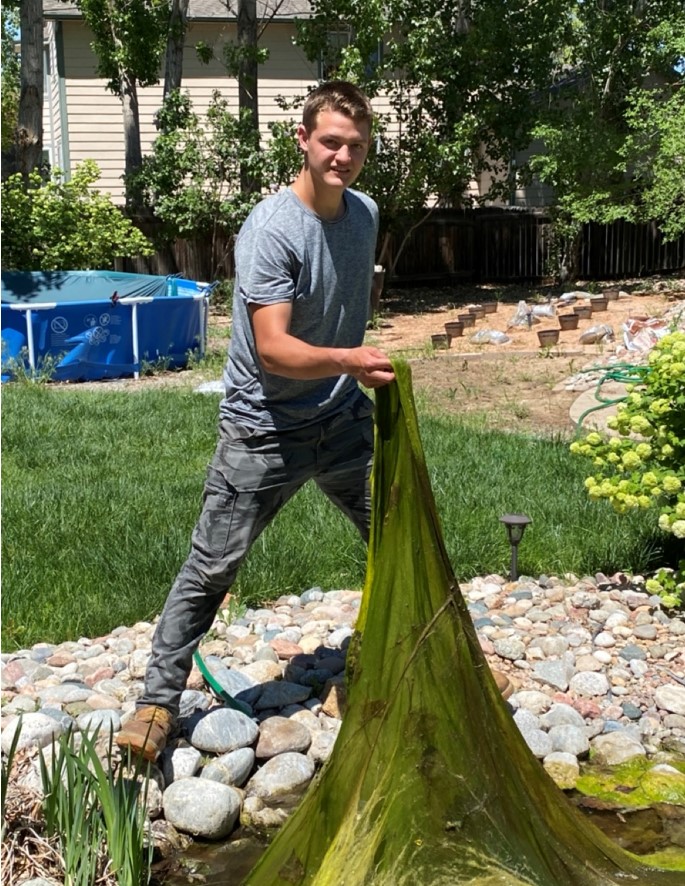
Solutions:
First, don’t freak out! Continue adding bacteria, and wait for it, and the plants, to wake up and get going. Remember, there is no magic wand when it comes to nature. Help get your pond in balance by following our advice. You can also take a flat broom or skinny rake and get the algae out when it becomes too much, but once the pond is in balance, algae won’t be so much of an issue.
After a few weeks, you may need to consider other options:
- Ask yourself, how often are you feeding the fish? If we feed too much in the spring the system has a harder time processing the nutrients. You may be able to cut that in half. We all like to feed our fish and the more we feed them, the more nutrients are in the pond. If you want to talk about how often you are feeding them, give us a call.
- More plants use up more nutrients in the pond. Putting a new small plant in will not fix the problem, but adding plants that will grow larger and larger every year will help in the long run. Planning ahead and cultivating a variety of plants with multiple colors and textures will help use up more nutrients, and they will grow to mature plants in a couple of seasons. Make sure you get Zone 5 plants so they will overwinter here in Colorado.
- Provide more shade for your backyard pond in the heat of the summer. More plants add more shade. Lilies are great for shade. However, if your pond is too deep or too shallow for lilies, floating plants are a great option. There are floating islands, hyacinth and water lettuce that readily propagate on their own. They do not overwinter but provide great shade in the meantime. If they tend to go into the skimmer, tie them to a rock with some fishing line. You will hardly be able to see it. They use up excess nutrients too!
***Another way to provide shade is simply to put up shade. We have a patio umbrella that we use to give the pond more shade.
- Consider water loss. If the string algae is really going nuts, do a water test to confirm you aren’t losing water. Sometimes too much freshwater can cause string algae to flare up. Here’s a link to a leak test!
- If there is no leak, you could use an Iongen. An Iongen releases copper ions into the water and they adhere to the string algae. This kills it off. Caution must be taken as the Iongen will hurt floating plants and potentially fish. Make sure that if you have fish you follow the directions exactly and keep it at a low level.
What about Barley Straw?
We often get questions about barley straw. Does it really work and what is the best way to use it?
Barley straw is really just a straw that gives off a particular strain of beneficial bacteria as it composts. This bacteria is excellent at keeping down algae! It is completely safe for fish and animals.
The best time to put in barley straw is in early spring because it can take 4 weeks for it to start breaking down. The good news is that once it begins breaking down, it will work in your pond the whole season.
How to use barley straw:
To use this treatment effectively, you’ll need to:
- Calculate the gallons of water in your backyard pond (If you don’t remember how to do that, Click HERE for the formula.)
- Obtain a “bale” (the bales are small, not like a bale of hay) of barley straw. These can be ordered over the internet and come in a variety of sizes from 6 ounce to 1 pound. They are usually 9–12″ x 5–6 ” and come in a mesh bag.
- Follow the instructions as far as how many bales for your size pond. Normally, it takes 1 or 2 bales placed near the waterfall or aerator.
- Remember, adding barley straw to a pond system out of balance will help, but it will be far more effective as a preventative measure in a pond that has all 5 elements of a healthy pond.
Alternatives
You can also purchase barley straw extract. This works, although we like that the actual straw is like a slow-release treatment.
Have you used a POND GUMMY? These guys are great! It comes in this little yogurt-like container and you peel off the top and put it in the BioFall or Skimmer. (Don’t smell it!)
Pro Tips:
Slow down on the fish feeding.
How often are you adding bacteria? Once a week at least!
Be patient! The pond may go through a spike in algae even after a cleanout. Keep dosing with bacteria as it comes back into balance.
How else can Colorado Pond Pros help?
Have more questions? Like, how to take care of Koi pond algae? Give us a call! We are always happy to discuss making your backyard pond even better. We also have a pond blog to give you more information than you ever thought you needed to know!
Want a backyard pond installed? Well, that’s our specialty! Need help with pond maintenance ? We’ve got that, too. Contact us today!

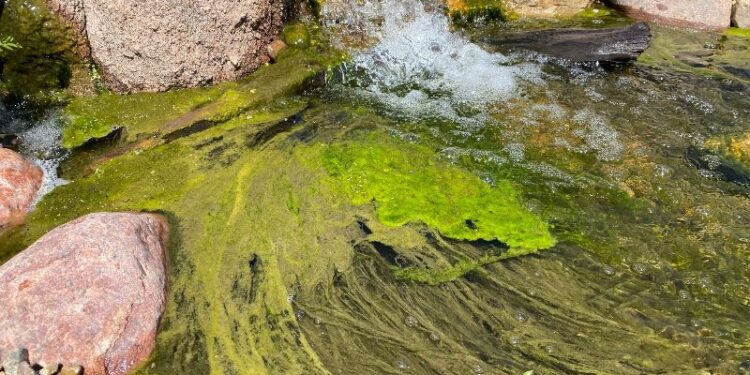

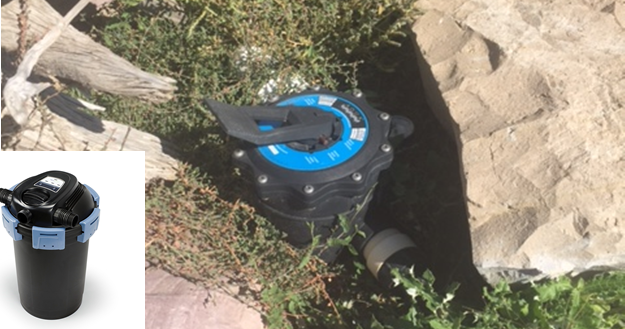
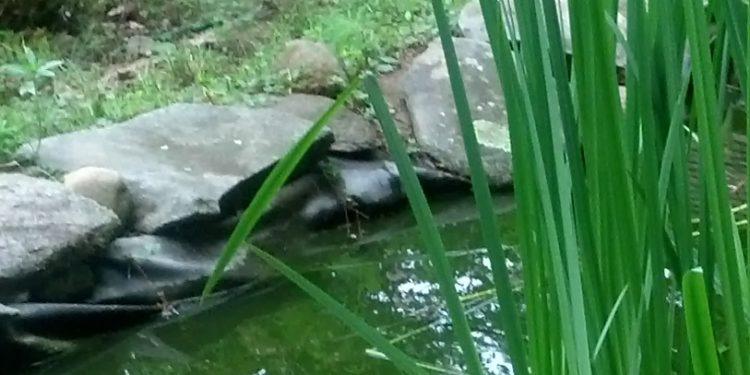
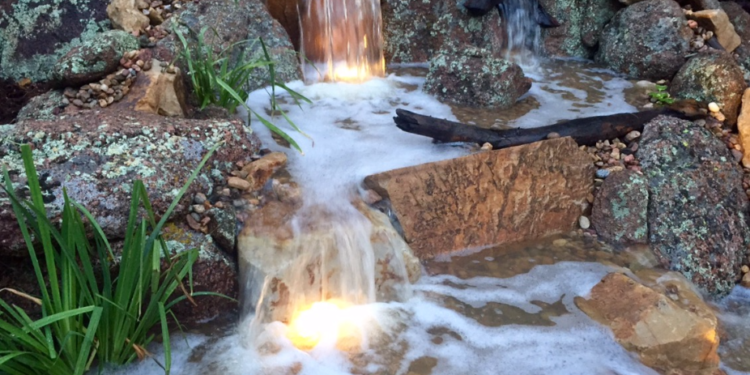
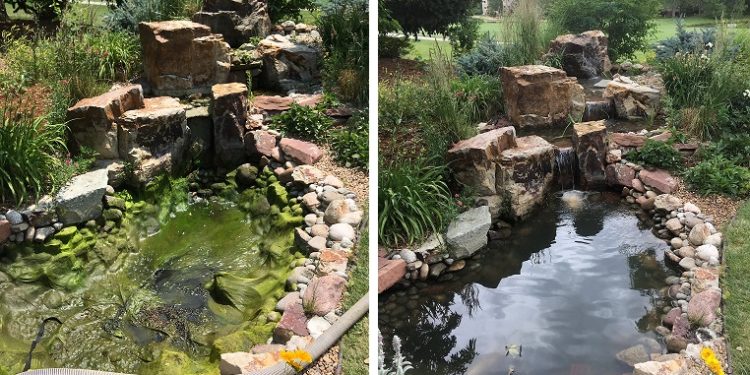
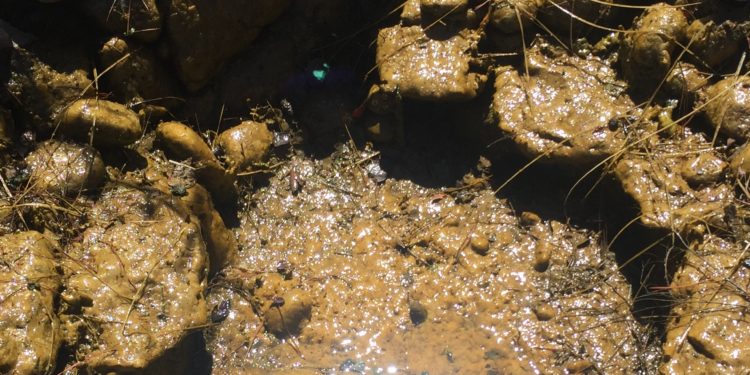
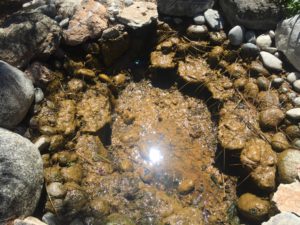 Algaecide works by removing the oxygen and suffocating the algae. It is also hard on plants, beneficial bacteria, and fish. Algae itself puts oxygen into the water. For that reason we recommend only treating ¼ of the pond at a time. When treating algae in a waterfall, turn it off and sprinkle dry algaecide onto the area, leaving it sitting without the waterfall on for 30 minutes.
Algaecide works by removing the oxygen and suffocating the algae. It is also hard on plants, beneficial bacteria, and fish. Algae itself puts oxygen into the water. For that reason we recommend only treating ¼ of the pond at a time. When treating algae in a waterfall, turn it off and sprinkle dry algaecide onto the area, leaving it sitting without the waterfall on for 30 minutes.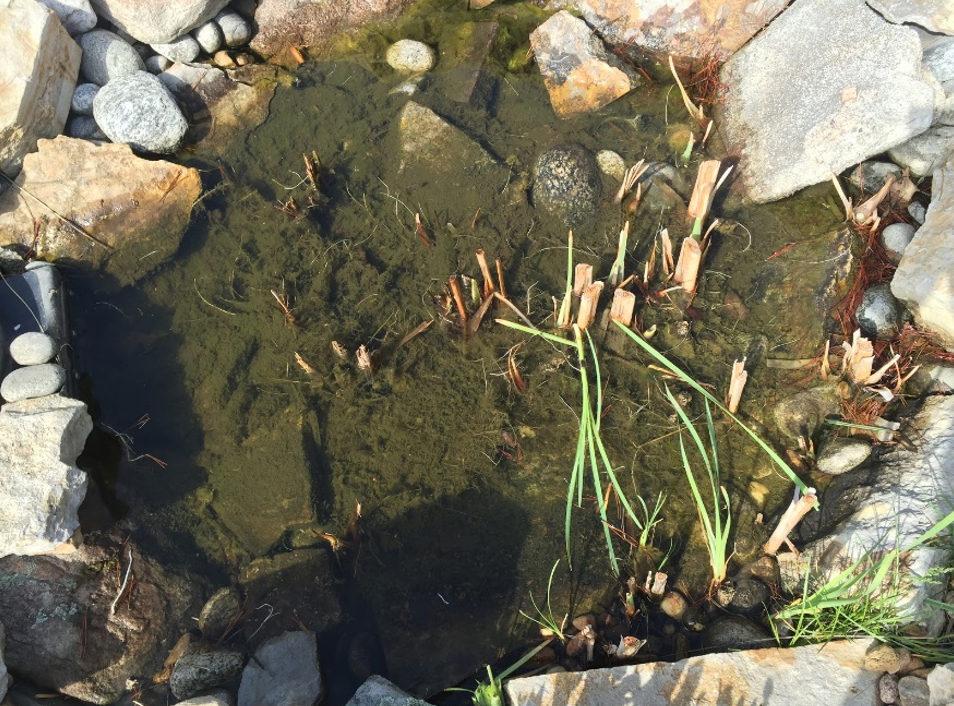 Does my pond need a cleanout?
Does my pond need a cleanout?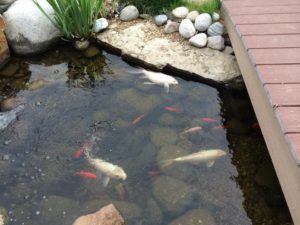 Barley straw helps keep algae at bay.
Barley straw helps keep algae at bay.